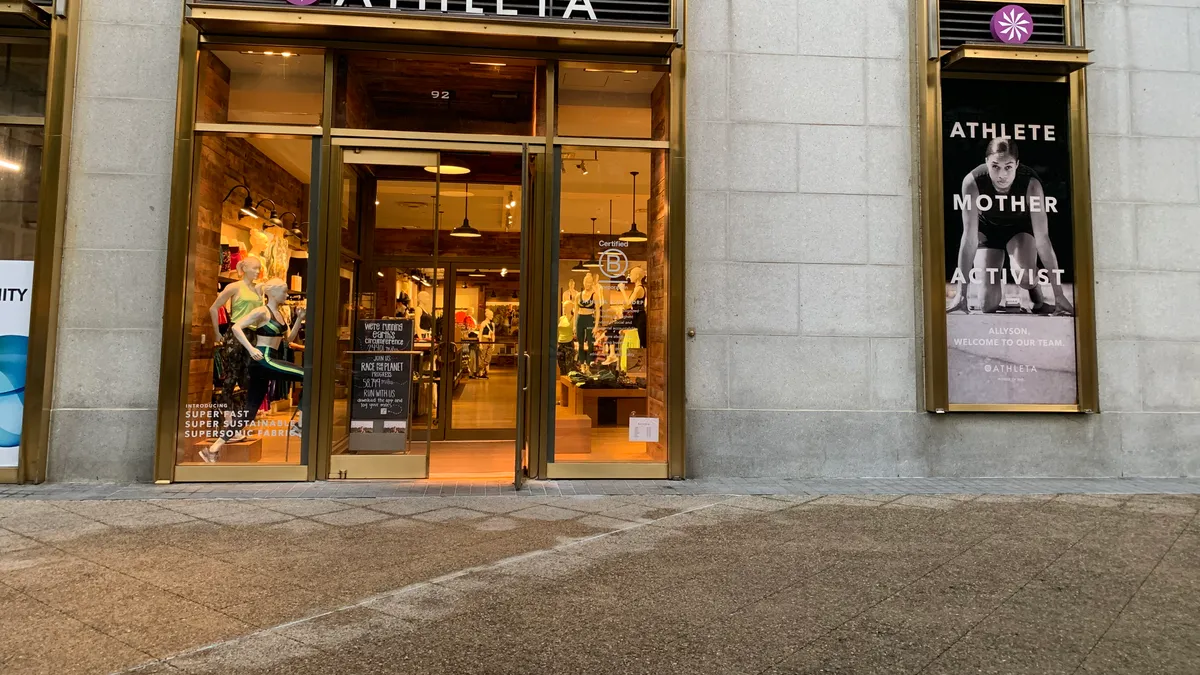Editor's note: The following is a guest post from Sara Spivey, chief marketing officer at Bazaarvoice.
Social media has come a long way since the days of MySpace and Flickr. What once facilitated connection and community among users now also serves as a major awareness and sales channel for brands. In the U.S. alone, 69% of adults use at least one social media platform, and it's a daily routine for most, with consumers spending an average of 40 minutes per day on these networks.
And while social platforms are useful for curating memes, staying on top of news and connecting with friends, they're also (albeit slowly) being used more and more by consumers to discover and purchase products.
Why? Well, for the same reason anyone buys anything online: convenience. With social media, the path to purchase is direct, product photos and reviews from customers are readily available and people often take action based on emotion or impulse.
As social channels continue to adopt and refine direct buying options, such as Facebook's Messenger Payments, e-commerce and social media will continue to merge to provide a comprehensive, non-disruptive shopping experience for consumers.
The evolution of social commerce
With the launch of Facebook Pages back in 2007, brands could establish a strong social media presence and connect with their audiences in an entirely new way. In 2010, Twitter announced the "Promoted Tweet," a pay-to-play feature that all major social platforms now offer in some variation. Since the late 2000s, the idea of buying and selling on social media has spread like a very slow-burning wildfire, as each social platform figures out how to integrate e-commerce in unobtrusive, seamless ways. Now, almost every major network offers some form of buying option for consumers:
- Instagram's Shoppable Posts
- Pinterest's Buyable Pins
- Tumblr's "Buy" Button
- Snapchat's Snap Store
- Facebook's Messenger Payments
Additionally, because mobile devices now offer one-touch payment methods, many of these "buy now" options can take place in-app, meaning consumers no longer need to visit a brand's site, or even leave their social feed to complete a purchase.
Eighty percent of all social media usage takes place on a mobile device, and mobile now accounts for 35% of all e-commerce transactions. The increase in mobile shopping combined with the continued innovation in social commerce has led to social media's emergence as today's third shopping channel, alongside online and in-store.
The benefits of social commerce
The integration of social media with e-commerce is a natural fit. For all of its benefits, e-commerce puts distance between brands and consumers, making it harder for shoppers to understand a brand's products and imagine how they might be used in real life. Social media, where consumers go for entertainment, connection and inspiration, allows these organizations to be closer to consumers.
There are certain advantages that social media platforms have over other channels. With the incredible comprehensiveness of consumer data available through these platforms, targeting, engaging and converting potential customers has never been easier.
Another factor to consider is the importance of consumer-generated content (CGC) in the shopper journey. Over 56% of online shoppers read reviews before making a purchase, and, in 2017, visual CGC saw a 55% year-over-year increase in conversion lift and a 96% interaction rate amongst shoppers. Moreover, visual CGC now has the highest revenue per visitor lift of all consumer content.
Lastly, as a channel, social media has the unique ability to move consumers through the entire sales funnel — from discovery to conversion to retention. The numerous features across platforms, from hashtag campaigns and Facebook Carousels to influencer marketing and Snapchat's Promoted Stories, allow for a variety of ways to engage and compel brands' audiences. Consumers perceive social media content, whether from a brand or a friend, to be more authentic than other content — meaning social media, when used properly, is a valuable place for companies to connect with shoppers.
So why hasn't social commerce taken off?
While 65% of brands and retailers say that improving their mobile shopping experience is a focus in 2018, not all are ready to entrust social media with the same investment. For many in retail, social media has yet to prove a viable channel for conversion.
For all the innovation in social media, there are still kinks that need to be worked out. Recent research shows that only 19% of consumers have ever made a purchase directly from a social media platform. Social commerce is most successful when it removes friction from the shopping experience. For example, it's only recently that shoppable posts and ads in Snapchat and Facebook directed users right to a product page where they can make a purchase and then return back to scrolling their feed, all without leaving the app.
The second primary challenge is when, where and with which audience brands should explore social commerce. A first decision to make is about which platforms to focus on. For now, Instagram seems to have the strongest performance with social commerce, but that audience, like Snapchat's, generally skews younger. Facebook is an alternative for those who want to reach an older audience, and LinkedIn remains critical for B2B campaigns. At the end of the day, much of social media is made up of a younger demographic. Generation Z is just now coming into the working world, and we have yet to see their true buying power. Understandably, brands are hesitant to spend marketing dollars on creating an effective social commerce strategy for an audience who can't yet buy what's being sold.
Product and industry are also important considerations, as it may never make sense to sell certain products through social media. Everyday items like toilet paper may never see wild success selling through social. Similarly, high consideration products or services, like vehicles or health insurance, have a similar outlook. It's important to be realistic about what consumers will and will not buy through social channels.
Looking ahead
Social media will likely never be the primary buying channel for shoppers, but it's evolved to become a viable option. Social media usage will only continue to grow, and networks will continue to innovate; we have only started to see the beginning of how social commerce can be used.
Brands and retailers should re-examine how social media fits into their overall marketing strategy — at the very least, it's a channel to entertain, engage and connect with consumers, and, at best, it's a third buying channel waiting to be fully tapped.













